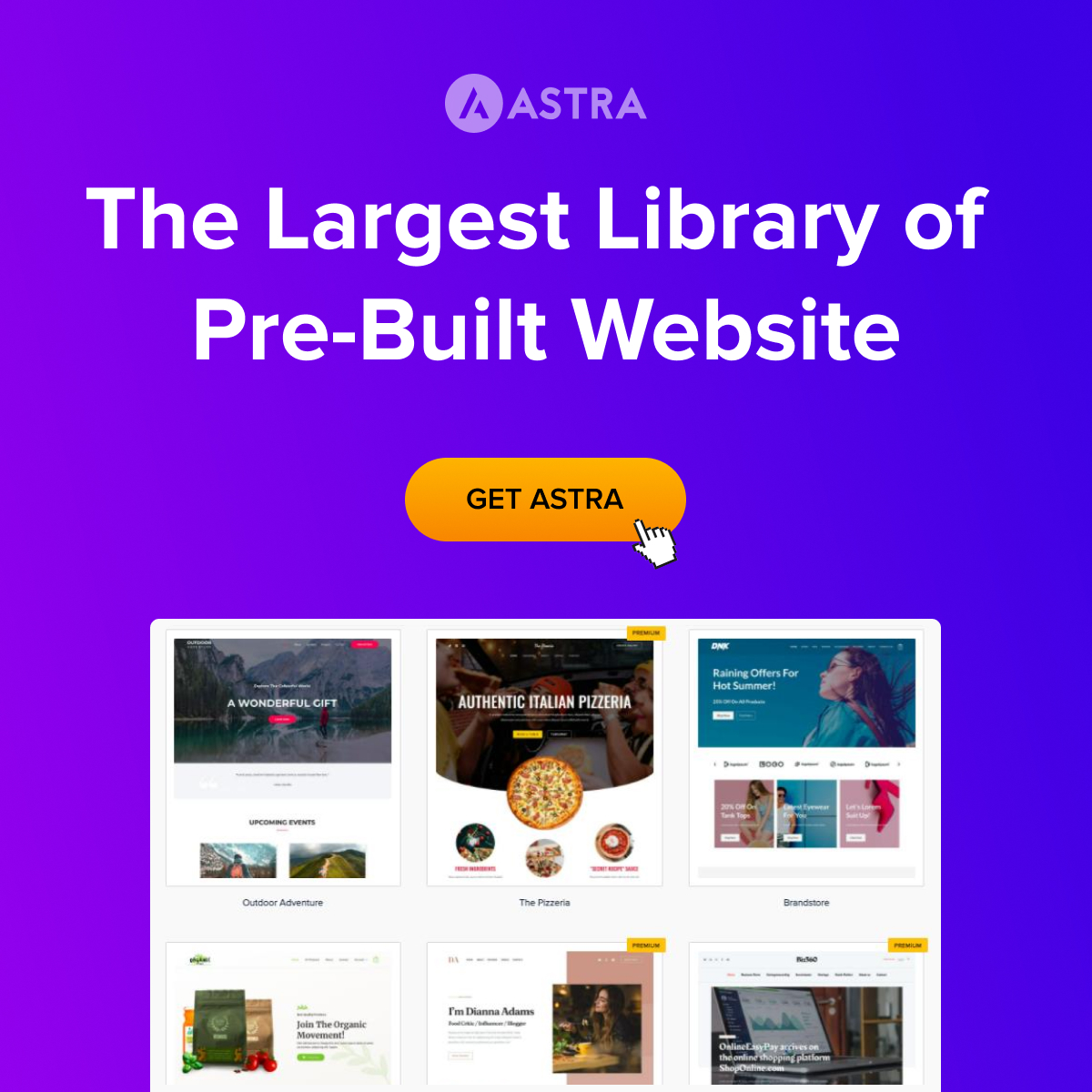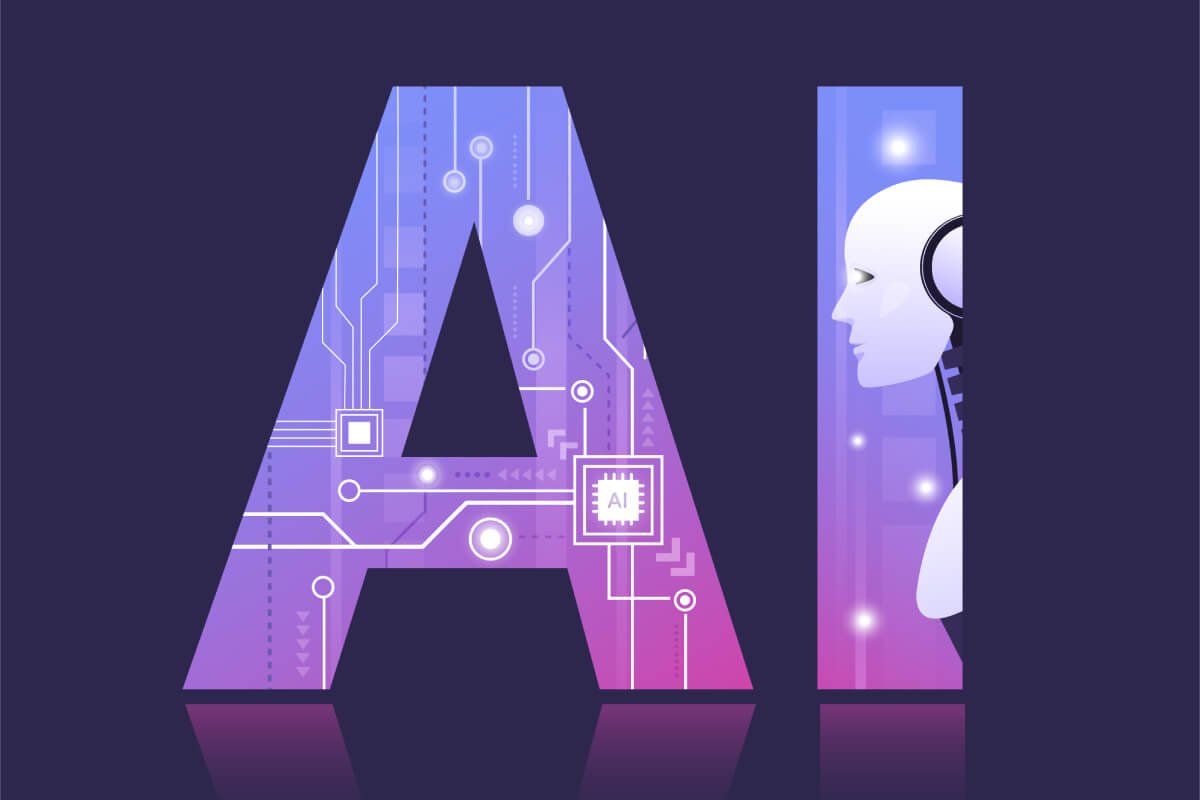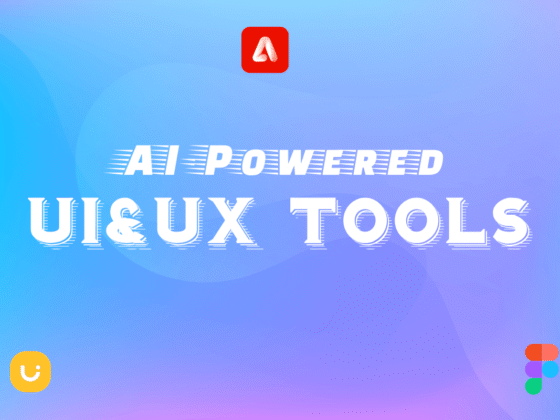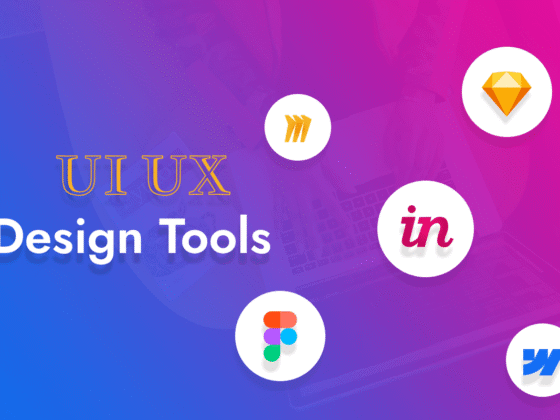Introduction
In recent years, the role of artificial intelligence (AI) in various industries has been rapidly expanding, and web design is no exception. As technology advances, AI is transforming how websites are created, optimized, and maintained. This shift is not just a trend but a significant evolution in the field of web design. By automating repetitive tasks, enhancing user experiences, and improving overall website performance, AI is revolutionizing the way web designers approach their work.
The integration of AI in web design offers numerous benefits. It allows for the creation of more personalized and dynamic websites, tailored to meet the specific needs and preferences of users. AI tools can analyze user behavior and adapt content in real-time, providing a more engaging and relevant experience. Additionally, AI-powered design platforms can assist designers by generating templates, suggesting design elements, and even writing code, thus streamlining the design process and enabling designers to focus more on creativity and innovation.
Moreover, AI plays a crucial role in optimizing websites for search engines, ensuring that content is not only high-quality but also highly discoverable. From keyword suggestions to voice search optimization, AI helps web designers enhance their websites’ SEO performance. This is vital in today’s digital landscape, where visibility and accessibility are key to a website’s success.
In this blog post, we will explore the various ways AI is impacting web design. We’ll delve into automated design processes, personalization, user experience enhancements, SEO and content optimization, performance and security, design assistance, accessibility improvements, and real-world examples of AI in action. By understanding these aspects, you can leverage AI to create smarter, more efficient, and more effective websites.
Whether you’re a seasoned web designer or just starting out, understanding the role of AI in web design is essential. It opens up new possibilities and provides tools that can significantly enhance your workflow and the quality of your projects. So, let’s dive into the fascinating world of AI in web design and discover how it can help you stay ahead in this ever-evolving field.
Overview of AI in Web Design
Artificial Intelligence (AI) is fundamentally altering the landscape of web design. By leveraging AI, designers can create more intuitive, efficient, and personalized websites. The integration of AI in web design extends beyond simple automation, impacting every aspect of the design and development process.
AI-driven tools and platforms are now essential components in the web design toolkit. These tools can analyze user data, predict preferences, and generate design elements that align with current trends and best practices. This not only speeds up the design process but also ensures that websites are tailored to meet user needs more effectively.
One of the most significant contributions of AI to web design is the automation of routine tasks. AI can handle tasks such as layout generation, image optimization, and even code writing. This allows web designers to focus on more creative and strategic aspects of their projects. For instance, AI-powered website builders like Wix ADI and Bookmark AI can create fully functional websites based on minimal input from the user, democratizing web design and making it accessible to those with little to no technical expertise.
Personalization is another key area where AI is making a substantial impact. AI algorithms can analyze user behavior and preferences to deliver personalized content and experiences. This means that web design can now go beyond a one-size-fits-all approach, offering tailored experiences that keep users engaged and satisfied. For example, AI can adjust website layouts, recommend products, or customize content based on individual user interactions, enhancing the overall user experience.
AI also plays a crucial role in search engine optimization (SEO) and content creation. Tools like Clearscope and MarketMuse use AI to suggest keywords, improve content quality, and ensure that web pages rank higher in search engine results. This is essential for web design, as a well-optimized website attracts more traffic and provides a better return on investment.
Furthermore, AI enhances the security and performance of websites. AI-driven systems can monitor websites for potential threats and vulnerabilities, providing real-time protection against cyberattacks. They can also optimize website performance by analyzing load times and suggesting improvements, ensuring that websites run smoothly and efficiently.
In conclusion, AI is revolutionizing web design by automating processes, personalizing user experiences, optimizing content, and enhancing security and performance. By incorporating AI into web design, designers can create smarter, more responsive, and highly engaging websites that meet the evolving needs of users. As AI technology continues to advance, its role in web design will only grow, making it an indispensable tool for anyone in the field.
Importance and Relevance of AI in the Industry
The integration of artificial intelligence (AI) into web design is not just an emerging trend; it represents a significant leap forward in how websites are conceptualized, developed, and maintained. The importance and relevance of AI in the web design industry cannot be overstated, as it brings numerous advantages that enhance both the efficiency and effectiveness of the design process.
1. Enhanced Efficiency and Automation
One of the primary reasons AI is so crucial in web design is its ability to automate repetitive and time-consuming tasks. Traditional web design often involves a significant amount of manual work, from coding and layout adjustments to content updates. AI tools can automate these processes, allowing designers to focus on more creative and strategic aspects of their work. For instance, AI-powered platforms can generate design templates, write code, and even suggest layout improvements, significantly reducing the time required to launch a website.
2. Improved Personalization
In today’s digital age, personalization is key to creating engaging and user-friendly websites. AI enables web designers to deliver highly personalized experiences by analyzing user behavior and preferences. By leveraging data from user interactions, AI can customize content, adjust design elements, and even recommend products or services tailored to individual users. This level of personalization enhances user satisfaction and increases engagement, making AI an invaluable tool in web design.
3. Superior User Experience (UX)
AI significantly contributes to improving the user experience on websites. AI-driven chatbots and virtual assistants provide real-time support and interaction, making it easier for users to find information and navigate websites. Additionally, AI can conduct extensive A/B testing to determine the most effective design elements, layouts, and content, ensuring that the website is optimized for user satisfaction. This focus on UX is essential for retaining visitors and converting them into loyal customers.
4. Advanced SEO and Content Optimization
Search engine optimization (SEO) is critical for the visibility and success of any website. AI helps web designers optimize their sites more effectively by providing advanced tools for keyword research, content suggestions, and performance analysis. AI can also adapt websites for voice search, an increasingly important aspect of SEO as more users rely on voice-activated devices. By leveraging AI for SEO, web designers can ensure their sites rank higher in search engine results, driving more organic traffic.
5. Robust Performance and Security
Website performance and security are paramount concerns for web designers. AI can monitor and enhance website performance by optimizing load times, compressing images, and managing resources more efficiently. Additionally, AI-driven security systems can detect and respond to potential threats in real-time, safeguarding websites from cyber attacks and ensuring data integrity. This robust performance and security framework provided by AI are vital for maintaining user trust and satisfaction.
6. Innovation and Competitive Advantage
Adopting AI in web design not only streamlines processes but also fosters innovation. AI tools can inspire new design ideas, suggest trends, and provide insights that might not be immediately apparent to human designers. This innovative edge gives web designers a competitive advantage, enabling them to create cutting-edge websites that stand out in a crowded digital marketplace.
In conclusion, the importance and relevance of AI in the web design industry are profound. From enhancing efficiency and personalization to improving user experience, SEO, performance, and security, AI is reshaping the landscape of web design. By embracing AI, web designers can stay ahead of the curve, delivering superior websites that meet the evolving needs of users and businesses alike.
Automated Design Processes
The advent of AI has brought a significant shift in web design, particularly in the realm of automated design processes. These advancements are making it easier and faster for designers to create aesthetically pleasing and functional websites. By leveraging AI, web design has become more efficient, allowing designers to focus on creativity and strategy rather than getting bogged down in repetitive tasks.
AI-Powered Website Builders
AI-powered website builders are at the forefront of automated design processes. Platforms like Wix ADI (Artificial Design Intelligence) and Bookmark AI use sophisticated algorithms to create complete websites based on user inputs. These tools analyze the information provided by the user, such as industry type, design preferences, and required features, to generate a fully functional website. This automation not only speeds up the web design process but also makes it accessible to individuals without technical skills.
For instance, Wix ADI asks users a series of questions to understand their needs and preferences. Based on these responses, it designs a personalized website, complete with images, text, and layout. This level of automation ensures that even those new to web design can have a professional-looking website up and running in no time.
Template Generation
Another significant impact of AI on web design is in the generation of design templates. AI tools can analyze vast amounts of data, including current design trends, user preferences, and industry standards, to create templates that are both visually appealing and highly functional. These templates provide a strong starting point for designers, saving time and effort in the initial stages of web design.
AI-driven platforms can generate templates that are tailored to specific industries or business needs. For example, a template designed for an e-commerce site will differ significantly from one created for a personal blog. By using AI to generate these templates, web designers can ensure that their websites are optimized for their intended purpose from the outset.
Benefits of Automated Design Processes
The integration of AI into web design through automated processes offers several benefits:
- Speed and Efficiency: Automated tools significantly reduce the time required to design a website, allowing for quicker turnaround times.
- Accessibility: With AI-powered tools, anyone can create a professional website, regardless of their technical expertise.
- Consistency: AI ensures that design elements are consistent across the website, maintaining a cohesive look and feel.
- Innovation: By automating routine tasks, designers can focus more on creative and strategic aspects of web design, leading to more innovative and engaging websites.
In conclusion, AI-driven automated design processes are revolutionizing web design. By making the design process faster, more efficient, and accessible to a wider audience, AI is enabling the creation of high-quality websites with less effort. As these technologies continue to evolve, we can expect even greater advancements in the field of web design, further blurring the lines between automated and human creativity.
Personalization
Personalization is a cornerstone of modern web design, and artificial intelligence (AI) is at the forefront of this transformation. By leveraging AI, web designers can create highly customized experiences that cater to individual user preferences and behaviors, significantly enhancing user engagement and satisfaction.
Content Customization
AI-powered algorithms analyze vast amounts of user data to understand individual preferences, behaviors, and interests. This data-driven approach allows web designers to tailor content specifically for each user. For example, e-commerce websites can recommend products based on previous purchases or browsing history, while news websites can display articles that match the user’s reading habits. This level of content customization not only improves the user experience but also increases the likelihood of conversions and repeat visits.
Incorporating AI into web design for content customization means that websites can dynamically adjust the content they present to each visitor. This real-time adaptation ensures that users always see the most relevant and engaging content, keeping them on the site longer and encouraging interaction.
Dynamic Design Adjustments
AI enables web design to go beyond static layouts and create dynamic, adaptive designs. By analyzing user interactions and preferences, AI can modify various design elements such as colors, fonts, and layouts to enhance the user experience. For instance, if data shows that a particular user prefers a minimalist design, the AI can adjust the website’s appearance to match this preference.
Dynamic design adjustments also extend to optimizing the website for different devices and screen sizes. AI can automatically reformat and reorganize content to ensure it is visually appealing and easy to navigate, regardless of the device being used. This is particularly important in an era where users access websites from a wide range of devices, from desktops to smartphones and tablets.
Enhanced User Experiences
The ultimate goal of incorporating AI-driven personalization into web design is to create a seamless and intuitive user experience. By anticipating user needs and delivering personalized content and design elements, AI helps make each visit to the website more enjoyable and efficient. Users are more likely to return to a site that feels tailored to their preferences, leading to increased loyalty and engagement.
Personalization through AI also means that web designers can continuously improve the user experience. AI systems learn and evolve over time, adapting to new user behaviors and preferences. This ongoing optimization ensures that websites remain relevant and effective in meeting the needs of their users.
In conclusion, AI-driven personalization is revolutionizing web design by enabling the creation of highly customized and dynamic websites. By focusing on individual user preferences and behaviors, AI enhances the overall user experience, making websites more engaging and effective. As AI technology continues to advance, the possibilities for personalization in web design will only grow, offering even more opportunities to create unique and impactful digital experiences.
User Experience (UX) Enhancement
User experience (UX) is a critical aspect of web design, focusing on creating websites that are intuitive, efficient, and enjoyable to use. AI plays a crucial role in enhancing UX by providing tools and technologies that can analyze user behavior, personalize content, and improve overall satisfaction. In this section, we’ll explore how AI is revolutionizing UX in web design.
Chatbots and Virtual Assistants
One of the most visible ways AI is enhancing UX in web design is through the use of chatbots and virtual assistants. These AI-driven tools provide real-time assistance to website visitors, helping them find information, answer questions, and complete tasks. By integrating chatbots into their websites, web designers can improve customer service, increase engagement, and provide a more personalized experience for users.
A/B Testing and User Feedback Analysis
Another key area where AI is enhancing UX is through A/B testing and user feedback analysis. AI algorithms can analyze vast amounts of data to determine which design elements are most effective in achieving specific goals, such as increasing conversions or reducing bounce rates. By using AI to conduct A/B tests and analyze user feedback, web designers can make data-driven decisions that lead to improved UX and better overall performance.
Personalization
AI enables web designers to create more personalized experiences for users. By analyzing user behavior, AI algorithms can tailor content, recommendations, and design elements to individual preferences, making the website more engaging and relevant to each user. Personalization can lead to higher conversion rates, increased user satisfaction, and improved brand loyalty.
Dynamic Design Adjustments
AI can also help in making dynamic design adjustments based on user interactions. For example, AI algorithms can analyze how users are interacting with a website and adjust the layout, color scheme, or content in real-time to optimize the user experience. This level of adaptability ensures that the website is always engaging and relevant to users’ needs.
In conclusion, AI is revolutionizing UX in web design by providing tools and technologies that can analyze user behavior, personalize content, and make dynamic design adjustments. By leveraging AI, web designers can create websites that are not only visually appealing but also intuitive, efficient, and enjoyable to use. As AI continues to evolve, its impact on UX in web design is only expected to grow, providing exciting opportunities for designers to create truly innovative and user-centric websites.
SEO and Content Optimization
Search engine optimization (SEO) is a crucial aspect of web design, ensuring that websites are visible and accessible to search engines and users alike. AI is playing an increasingly important role in SEO, providing web designers with tools and techniques to optimize their websites for better search engine rankings. In this section, we’ll explore how AI is transforming SEO and content optimization in web design.
Keyword and Content Suggestions
AI-powered tools can analyze vast amounts of data to provide web designers with valuable insights into keyword trends and content optimization strategies. By using AI to generate keyword suggestions and content ideas, web designers can create high-quality, relevant content that resonates with their target audience and improves their website’s SEO performance.
Voice Search Optimization
With the rise of voice-activated devices, optimizing websites for voice search has become increasingly important. AI can help web designers optimize their content for voice search by analyzing natural language patterns and providing insights into how people search using voice commands. By incorporating voice search optimization strategies into their web design, designers can ensure that their websites are accessible and user-friendly for voice-activated devices.
Content Quality and Relevance
AI algorithms can analyze the quality and relevance of content on a website, helping web designers identify areas for improvement. By using AI to assess the readability, relevance, and engagement level of their content, designers can create content that is more likely to rank well in search engine results and provide value to their audience.
Automated SEO Audits
AI can conduct automated SEO audits of websites, identifying issues such as broken links, duplicate content, and missing meta tags. By using AI to identify and fix these issues, web designers can improve their website’s SEO performance and ensure that it is properly optimized for search engines.
In conclusion, AI is transforming SEO and content optimization in web design by providing tools and techniques that can analyze keyword trends, optimize content for voice search, assess content quality and relevance, and conduct automated SEO audits. By leveraging AI, web designers can improve their website’s visibility and accessibility, ultimately leading to better search engine rankings and a more successful online presence.
Performance and Security
Performance and security are two critical aspects of web design that can significantly impact user experience and overall website success. AI is playing an increasingly important role in optimizing performance and enhancing security measures. In this section, we’ll explore how AI is transforming performance and security in web design.
Load Time Optimization
AI algorithms can analyze website performance data and user behavior to identify areas for improvement. By optimizing images, minifying code, and implementing caching techniques, AI can help web designers improve website load times. Faster load times not only enhance user experience but also improve search engine rankings, as load speed is a factor in search engine algorithms.
Security Monitoring
AI-powered security tools can monitor websites for potential security threats and vulnerabilities. By analyzing patterns of behavior and identifying anomalies, AI can detect and respond to security threats in real-time. This proactive approach to security can help web designers protect their websites from cyber attacks and ensure the integrity of their data.
Content Delivery Networks (CDNs)
AI can optimize content delivery networks (CDNs) to improve website performance and security. By analyzing traffic patterns and user behavior, AI can determine the most efficient way to deliver content to users, reducing latency and improving load times. Additionally, AI can help identify and mitigate security risks associated with CDN usage, such as DDoS attacks.
Automated Performance Testing
AI can conduct automated performance tests to identify bottlenecks and areas for improvement. By simulating user interactions and analyzing website performance metrics, AI can help web designers optimize their websites for better performance. Automated performance testing can also help identify potential security vulnerabilities, allowing designers to proactively address them before they become a problem.
In conclusion, AI is transforming performance and security in web design by providing tools and techniques that can optimize load times, enhance security measures, optimize CDNs, and conduct automated performance testing. By leveraging AI, web designers can create websites that not only perform well but are also secure and reliable, ultimately leading to a better user experience and a more successful online presence.
Design Assistance and Inspiration
Designing a website involves creativity, innovation, and attention to detail. AI is increasingly being used to assist designers in generating ideas, suggesting design elements, and streamlining the design process. In this section, we’ll explore how AI is providing design assistance and inspiration in web design.
AI Design Tools
AI-powered design tools can assist web designers in various aspects of the design process. These tools can analyze design trends, user preferences, and brand guidelines to suggest design elements such as color schemes, fonts, and layouts. By using AI design tools, web designers can create visually appealing and cohesive designs that resonate with their target audience.
Automated Code Generation
AI can also assist web designers in generating code for their designs. By analyzing design mockups and converting them into HTML, CSS, and JavaScript code, AI can help designers streamline the development process and reduce the likelihood of errors. This automated code generation process saves time and allows designers to focus more on the creative aspects of web design.
Design Inspiration
AI can provide web designers with design inspiration by analyzing a vast array of design examples and suggesting ideas based on current design trends. By using AI to explore different design styles and techniques, designers can find inspiration for their own projects and stay updated with the latest design trends.
Design Collaboration
AI-powered collaboration tools can facilitate communication and collaboration among design teams. These tools can help designers share ideas, provide feedback, and collaborate on design projects in real-time. By using AI to enhance collaboration, web designers can work more efficiently and effectively, resulting in better design outcomes.
In conclusion, AI is providing valuable design assistance and inspiration in web design by offering tools that can suggest design elements, generate code, provide design inspiration, and facilitate collaboration among design teams. By leveraging AI, web designers can enhance their creativity, streamline their workflow, and create visually stunning and engaging websites.
Accessibility Improvements
Web accessibility is the practice of ensuring that websites are usable by people of all abilities, including those with disabilities. AI is playing an increasingly important role in improving accessibility in web design, making websites more inclusive and user-friendly. In this section, we’ll explore how AI is enhancing accessibility in web design.
Automated Accessibility Checks
AI-powered tools can conduct automated accessibility checks of websites, identifying issues that may make the site difficult to use for people with disabilities. These tools can analyze elements such as color contrast, text size, and navigation structure to ensure compliance with accessibility standards such as WCAG (Web Content Accessibility Guidelines). By using AI to conduct automated accessibility checks, web designers can identify and fix accessibility issues early in the design process, making their websites more inclusive.
Alternative Text Generation
AI can assist web designers in generating alternative text for images, making them accessible to people who use screen readers or have visual impairments. By analyzing the content and context of images, AI algorithms can generate descriptive alternative text that accurately describes the image, providing a more meaningful experience for users with disabilities.
Design for Keyboard Navigation
AI can help web designers create websites that are accessible to keyboard users. By analyzing user interactions and navigation patterns, AI can suggest design elements and navigation structures that make it easier for keyboard users to navigate the site. This includes providing keyboard shortcuts, ensuring that all interactive elements are accessible via keyboard, and optimizing the tab order for easy navigation.
Semantic HTML Suggestions
AI can analyze the structure of a website and suggest improvements to ensure that it is accessible to people using screen readers. By suggesting the use of semantic HTML elements such as headings, lists, and landmarks, AI can help web designers create websites that are easier to navigate and understand for users with disabilities.
In conclusion, AI is improving accessibility in web design by providing tools that can conduct automated accessibility checks, generate alternative text for images, design for keyboard navigation, and suggest the use of semantic HTML elements. By leveraging AI, web designers can create websites that are more inclusive and accessible to people of all abilities, ensuring that everyone can access and use the web.
Case Studies and Examples
To better understand the impact of AI on web design, let’s explore some real-world case studies and examples that highlight the benefits and potential of AI in this field.
1. Grid: AI Website Builder
Grid is an AI-powered website builder that uses machine learning algorithms to design custom websites based on user input. It analyzes design preferences, content, and branding to create unique and visually appealing websites. Grid demonstrates how AI can automate the design process and create personalized web experiences.
2. Wix ADI
Wix ADI (Artificial Design Intelligence) is another example of AI in web design. It generates personalized website templates based on user answers to a few questions. Wix ADI showcases how AI can simplify the web design process for users with no design experience, making it accessible to a broader audience.
3. Adobe Sensei
Adobe Sensei is an AI-powered platform that offers various tools for web designers. One of its features is automated image cropping, where AI analyzes an image and suggests the best crop for different screen sizes. This showcases how AI can assist designers in optimizing images for responsive web design.
4. Clearscope
Clearscope is an AI tool that helps optimize content for SEO. It analyzes top-ranking content for a given keyword and provides suggestions to improve the content’s relevance and quality. Clearscope demonstrates how AI can assist web designers in creating SEO-friendly content that ranks higher in search engine results.
5. Figma’s Auto Layout
Figma, a popular design tool, introduced Auto Layout, an AI-powered feature that simplifies the process of designing responsive layouts. Auto Layout automatically adjusts the layout of elements based on screen size, reducing the manual effort required to create responsive designs. This showcases how AI can streamline the design process and improve efficiency for web designers.
In conclusion, these case studies and examples demonstrate the diverse ways in which AI is transforming web design. From automated website builders to SEO optimization tools, AI is revolutionizing the industry by making web design more accessible, efficient, and effective. As AI continues to evolve, its impact on web design is expected to grow, leading to even more innovative and user-centric websites in the future.
Conclusion
The integration of artificial intelligence (AI) into web design has ushered in a new era of possibilities, transforming how websites are created, optimized, and maintained. From automated design processes to personalized user experiences, AI is revolutionizing the way web designers approach their work.
One of the key advantages of AI in web design is its ability to automate repetitive tasks, allowing designers to focus more on creativity and innovation. AI-powered tools can generate design templates, suggest color schemes, and even write code, streamlining the design process and improving efficiency.
Moreover, AI is enhancing user experiences by personalizing content, providing real-time assistance through chatbots, and making dynamic design adjustments based on user behavior. These improvements not only make websites more engaging and relevant but also increase user satisfaction and loyalty.
AI is also playing a crucial role in optimizing websites for search engines, ensuring that content is not only high-quality but also highly discoverable. By analyzing keyword trends and suggesting content optimizations, AI is helping web designers improve their websites’ SEO performance and visibility.
Furthermore, AI is improving website performance and security by optimizing load times, monitoring for security threats, and conducting automated performance tests. These enhancements not only improve user experience but also ensure that websites are secure and reliable.
In conclusion, AI is reshaping the landscape of web design, providing designers with powerful tools and technologies that can enhance creativity, efficiency, and user experience. As AI continues to evolve, its impact on web design is expected to grow, leading to more innovative, user-centric, and accessible websites in the future. Embracing AI in web design is not just a trend but a necessity in staying ahead in this ever-evolving field.














